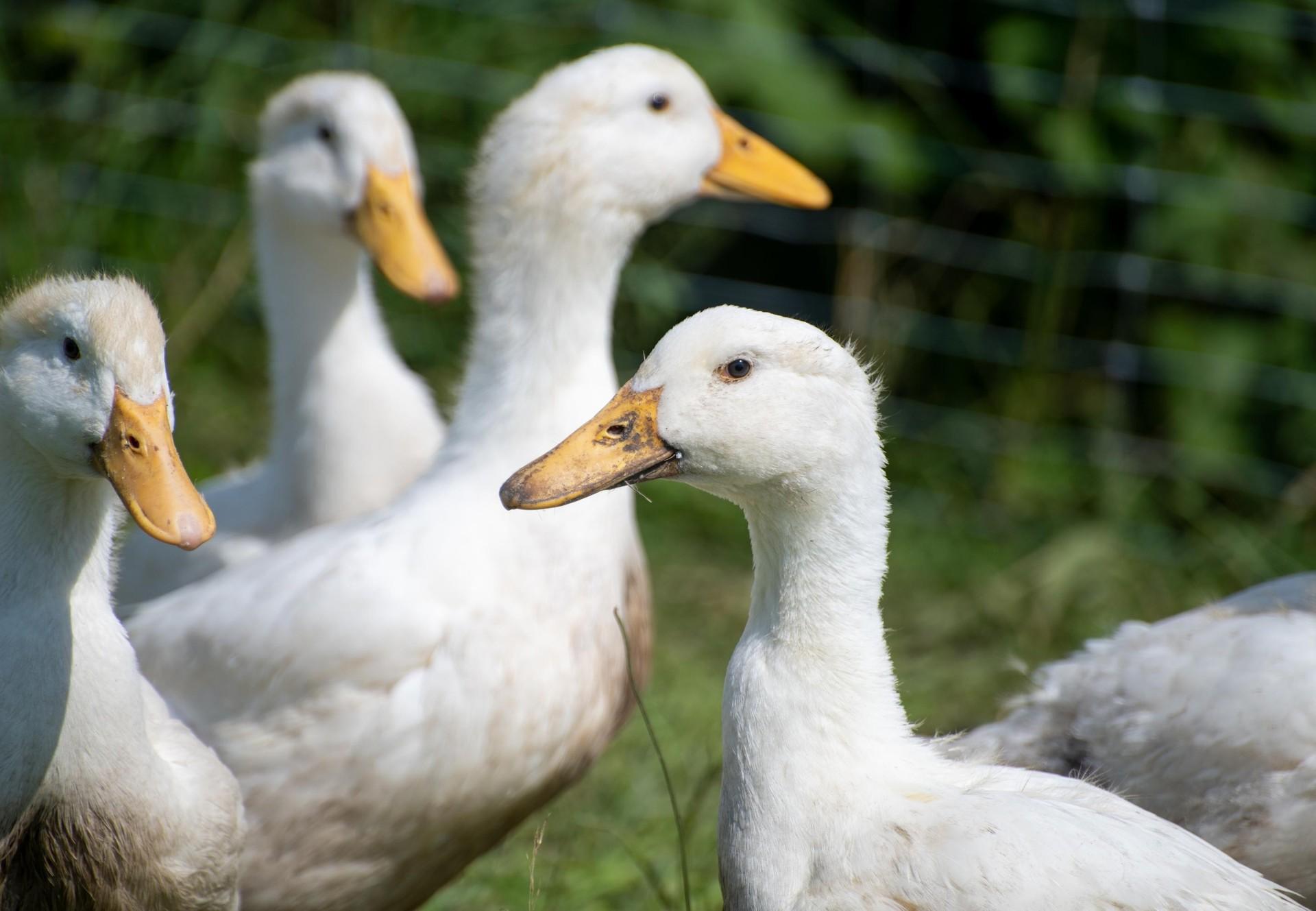
10 Amazing Facts About Ducks
Did you know that all ducks have highly waterproof feathers?
Ducks are a group of species of water birds – relatively small in size and with shorter necks than their close cousins of swans and geese. Along with their longer necked cousins, they make up the biological family of Anatidae. Humans have had a long relationship with members of this family by being economically and culturally important to us. Ducks, in particular, have been domesticated to be exploited for their feathers, eggs, and meat.
- All ducks have highly waterproof feathers. A duck's feathers are so waterproof that even when the duck dives underwater, the downy underlayer of feathers right next to the skin will stay completely dry.
- Ducks are omnivorous and will eat grass, aquatic plants, insects, seeds, fruit, fish, crustaceans, and other types of food.
- Ducklings younger than 10 days tend to swim and walk as a group, always close to their mother, to avoid the attack of predators.
- Most duck species are monogamous for a breeding season but they do not often mate for life. Instead, they will seek out new mates each year, choosing the healthiest, strongest, best mate who can help them pass on their genes to a new duckling generation.
- Ducks are outgoing, social animals who feel most at ease when they're in a larger group of other ducks.
- Ducks are birds. Ducks are also called "waterfowl" because they are normally found in places where there is water like ponds, streams, and rivers.
- Ducks can live up to 20 years, depending on the species and if well cared for.
- The production of eggs is affected by daylight. When there is more daylight, the ducks will lay more eggs. To prevent this from happening, farmers use artificial lighting so that the ducks have about 17 hours of light a day to produce eggs efficiently.
- The eggs will hatch within 28 days normally, except for the Muscovy duck which takes about 35 days to hatch. The mother duck will keep her brood of ducklings together to protect them from predators.
- Ducks have been domesticated as pets and farm animals for more than 500 years, and all domestic ducks are descended from either the mallard or the Muscovy duck. Mallards especially, are easy to crossbreed with other types of ducks, and mallards often hybridize with all types of ducks at local ponds.
Source
1. Moreno-Rueda G. Preen oil and bird fitness: a critical review of the evidence: Preen oil and bird fitness. Biological Reviews. 2017;92(4):2131–2143. doi:10.1111/brv.12324
2. Rodenburg TB, Bracke MBM, Berk J, Cooper J, Faure JM, Guémené D, Guy G, Harlander A, Jones T, Knierim U, et al. Welfare of ducks in European duck husbandry systems. World’s Poultry Science Journal. 2005;61(04):633–646. doi:10.1079/WPS200575
3. Hoy S. Nutztierethologie. Stuttgart: Eugen Ulmer; 2009.
4. Eitniear JC, Bribiesca-Formisano R, Rodríguez-Flores CI, Soberanes-González CA, Arizmendi M del C. Muscovy Duck (Cairina moschata), version 1.0. Birds of the World. 2020 [accessed 2023 Oct 10]. https://birdsoftheworld.org/bow/species/musduc/cur/introduction. doi:10.2173/bow.musduc.01species_shared.bow.project_name
5. How Long Do Ducks Live? An In-depth Guide of Duck Lifespan. Birdfact. [accessed 2023 Oct 10]. https://birdfact.com/articles/how-long-do-ducks-live
6. Pingel H. Enten und Gänse. 2nd edition. Ulmer; 2000.
2. Rodenburg TB, Bracke MBM, Berk J, Cooper J, Faure JM, Guémené D, Guy G, Harlander A, Jones T, Knierim U, et al. Welfare of ducks in European duck husbandry systems. World’s Poultry Science Journal. 2005;61(04):633–646. doi:10.1079/WPS200575
3. Hoy S. Nutztierethologie. Stuttgart: Eugen Ulmer; 2009.
4. Eitniear JC, Bribiesca-Formisano R, Rodríguez-Flores CI, Soberanes-González CA, Arizmendi M del C. Muscovy Duck (Cairina moschata), version 1.0. Birds of the World. 2020 [accessed 2023 Oct 10]. https://birdsoftheworld.org/bow/species/musduc/cur/introduction. doi:10.2173/bow.musduc.01species_shared.bow.project_name
5. How Long Do Ducks Live? An In-depth Guide of Duck Lifespan. Birdfact. [accessed 2023 Oct 10]. https://birdfact.com/articles/how-long-do-ducks-live
6. Pingel H. Enten und Gänse. 2nd edition. Ulmer; 2000.
